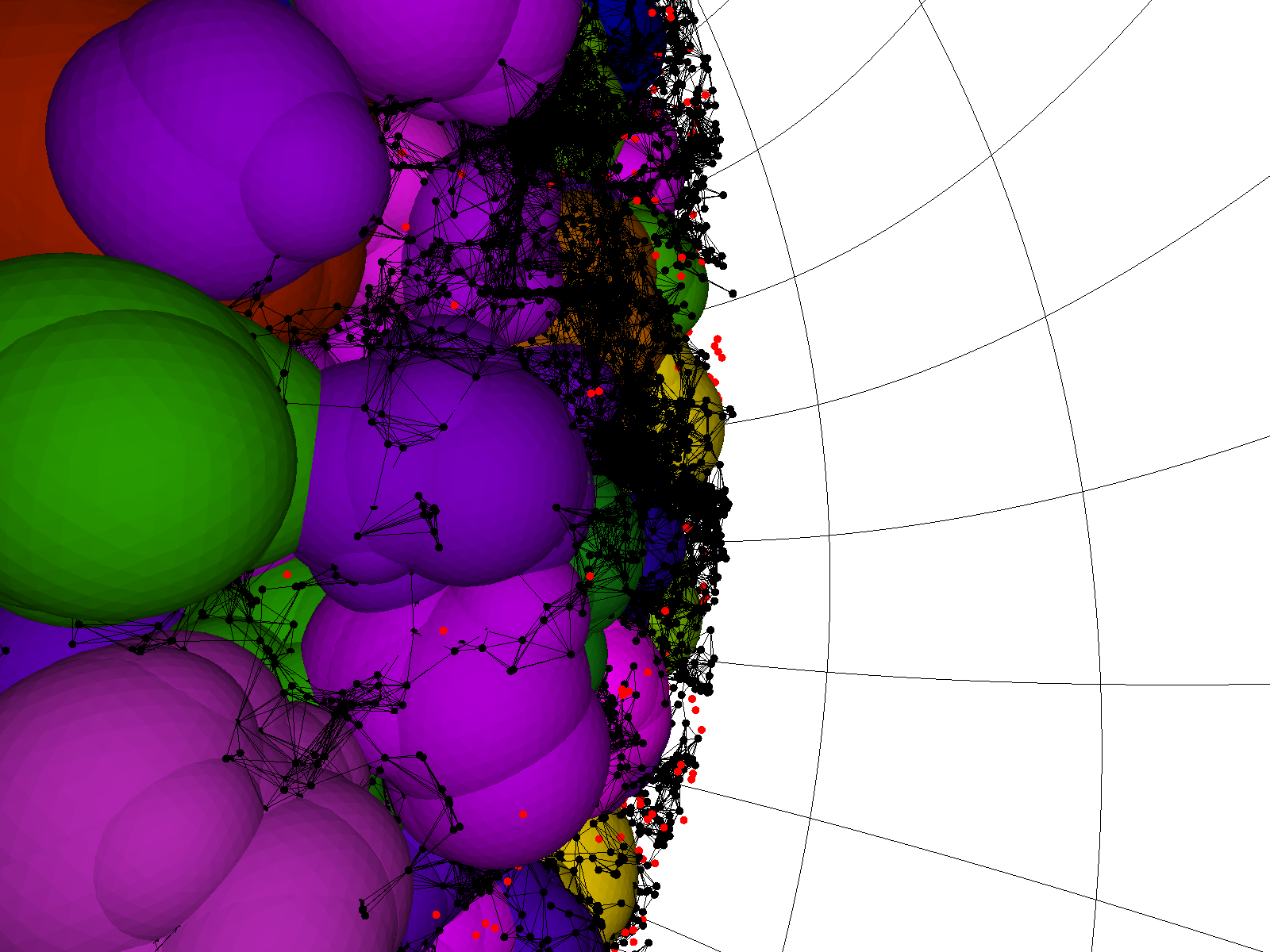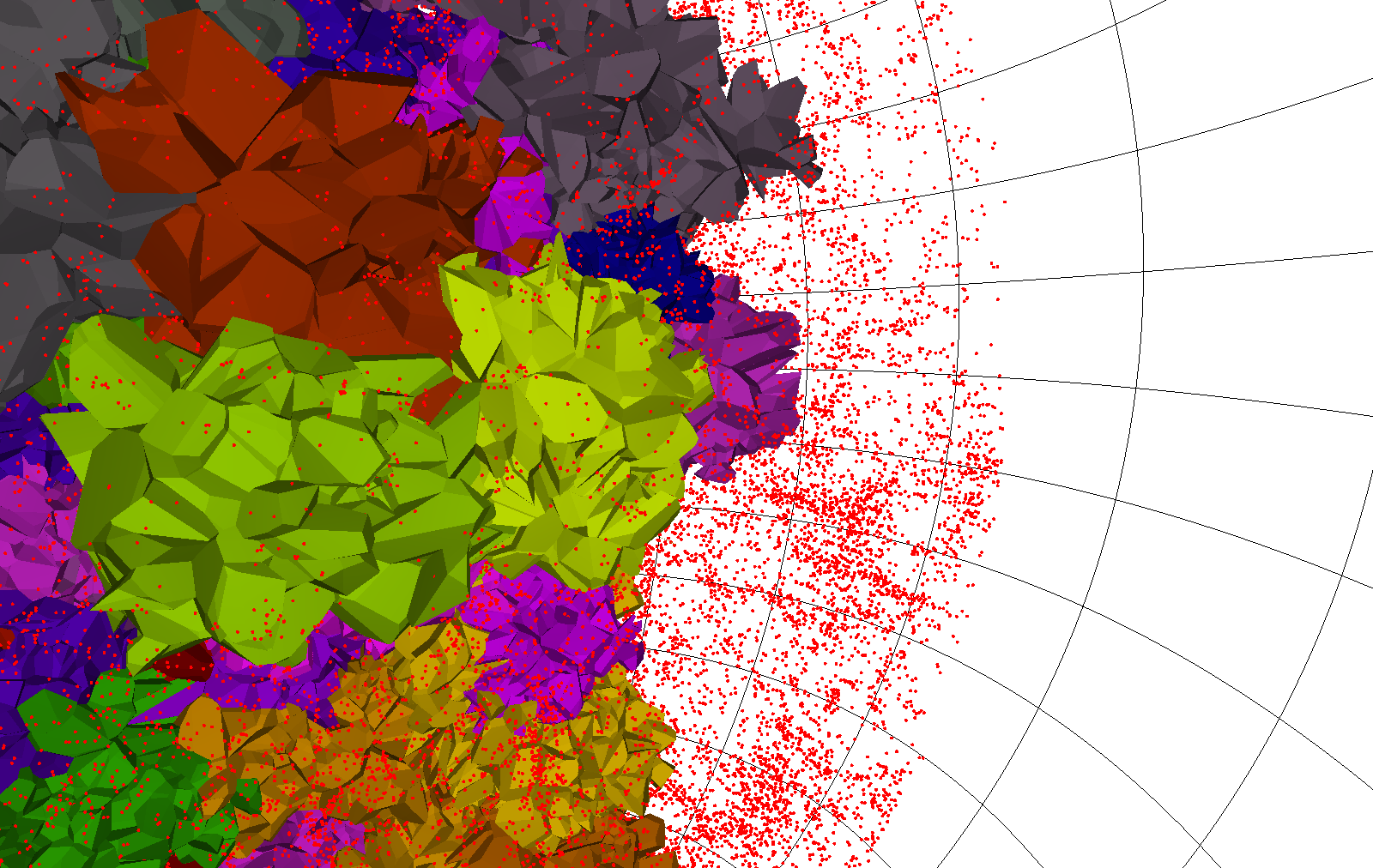Introduction

Figure 1: VoidRender visualization of the output from SDSS_DR7.
In order to aid in assessing the quality of the VoidFinder algorithm, the
vast.voidfinder.viz package includes a VoidRender class
(from vast.voidfinder.viz import VoidRender) which utilizes a combination of
OpenGL and the python vispy package to enable real-time 3D rendering of
the VoidFinder algorithm output. This 3D visualization allows the user to
explore 3D space in a video-game-esque manner, where the w-a-s-d-style keyboard
controls function to give the user a full range of motion:
forward/backward/left/right/up/down translation and pitch/yaw/roll rotation.
Each void hole of the VoidFinder output is rendered to the screen using the
icosadehral sphere approximation, where the depth of the approximation is
configurable and higher approximation depths yield a finer and finer grained
triangularization of each sphere. In addition, VoidRender includes an
option to remove the interior walls of each void, which is approximated by
removing the triangles from the triangluarization where all three vertices of a
given triangle fall within the radius of an intersecting sphere. This option
aids in visually inspecting the properties of joining spheres.
The galaxy survey upon which the output voids are based may also be included within the visualization, where each galaxy is represented by a small dot since the radius of even the largest galaxy is negligibly small compared to the radius of the smallest void. For visual purposes, the mouse scroll wheel may be used to enlarge or shrink the galaxy dot size. By passing the appropriate portions of the galaxy survey to different parts of the VoidRender keyword parameters, wall galaxies may be displayed in black and void galaxies may be displayed in red. Additionally, in order to help visualize the clustering of wall galaxies, another VoidRender option plots a thin black line between a galaxy and its K nearest neighbors, yielding a denser spider-web look for those galaxies which cluster together, as can be seen in Figure 1: VoidRender visualization of the output from SDSS_DR7.
An animated example of the VoidRender visualization can be found on
YouTube. VoidRender can be
utilized to produce screenshots or videos such as this example if a user’s
environment includes the ffmpeg library.

V2 also includes an OpenGL and
vispy based visualization for its output. The surfaces of voids found by
the ZOBOV algorithm are made up of convex polygons, and are rendered exactly in
3D. Controls for movement and production of screenshots and videos are
identical to those of VoidRender. An example of the
V2 visualization is shown in the figure
above.